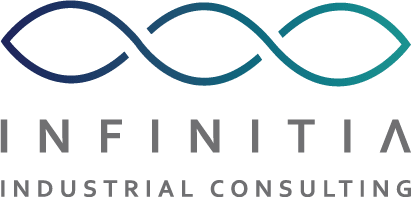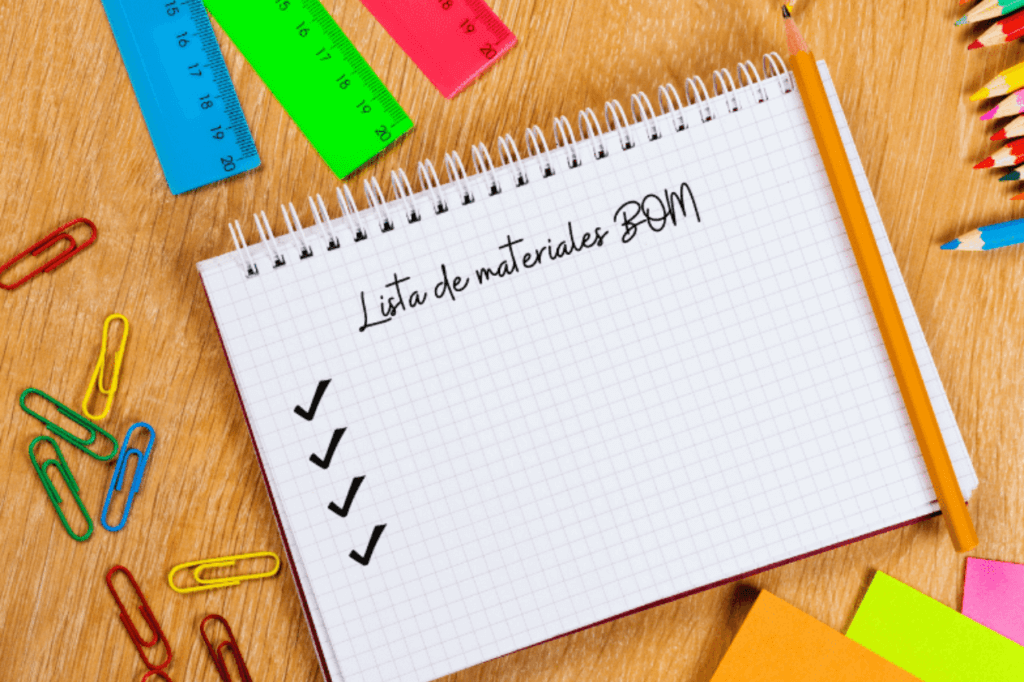If we talk about bread making, the Bill of Materials BOM would include flour, yeast and water, as well as infrastructure, kneading machines, ovens and exact instructions for the production process.
Have you ever heard of the BOM concept? This bill of materials serves to reduce costs in warehouse operations and has a direct impact on the correct supply of production lines. In the end, it is the first step in achieving an optimized, error-free production line that works at full capacity.
What is a BOM (Bill Of Materials) list?
When asked what a BOM or bill of materials is, it should be noted that the bill of materials (BOM) is a document that defines all the indispensable elements in a production process. As a general rule, this list influences the design, production and assembly stages of a product, and lists the raw materials, parts, tools, components and subcomponents that can make up a product.
Thus, a BOM or bill of materials is a complete list that covers everything from raw materials to material components, including parts and tools.
In this sense, although it is common to confuse them because they are used as synonyms, it is necessary to emphasize that BOM and MTO are not the same thing. On the one hand, BOM corresponds to the list of materials that we explained and, consequently, is used in the manufacture of products. On the other hand, MTO stands for Material Take Off and this document is specific to the construction sector.
What is a bill of materials for?
On the other hand, it is important to note that a well-made bill of materials is key to the smooth running of a company’s production. The warehouse adapts to production times, so that the supply chain is optimized and organized in an efficient way.
If you are wondering what a BOM is for, these are some of the points where it helps organizations:
- Acquisition of raw materials: The purchase of raw materials is planned with greater accuracy, so that an adequate and rigorous acquisition of raw materials for the manufacture of the product is carried out.
- Greater control of materials: In addition to raw materials, the bill of materials allows for an exhaustive control of costs related to equipment. Machinery, tooling or tools needed to handle raw materials.
- Stock: As there is greater control of the raw materials, the stock will be the necessary one; being more controlled with the bill of materials.
- Detect failures: Thanks to the BOM, it is much easier to detect in advance possible failures in the manufacture of a product.
Advantages of an effective BOM
A defined, detailed and complete BOM helps companies at different stages of production, from functional design within product development to product launch. These aids companies are based on:
1. planning the purchase of raw materials 2.
It is indicated which raw materials must be purchased and in what quantity to produce a product. This reduces costs and avoids overstocking of raw materials.
2. Establish the cost of material
Not only the raw material costs, but – as we have seen in previous lines – the equipment must also be taken into account. Therefore, it is a cost saving for the company: the right and necessary is purchased.
3. Avoiding stock-outs
Sufficient raw materials must be available to manufacture a product uninterruptedly and in accordance with the needs of the consumer and customer. Thus, a bill of materials is essential to improve customer satisfaction and promote customer loyalty.
4. More efficient design
Thanks to BOMs, design iterations occur. That is to say, the product design is elaborated little by little, trial and error, finally obtaining a much more efficient product with a higher success rate among the public.
5. Detect and minimize errors
Foreseeing and following instructions at each step reduces the probability of making mistakes and it is easier to detect where and when there has been an incident. Errors are reduced and, therefore, repetitions in production processes are avoided. In this way, the possibility of product risk is considerably reduced. A bill of materials is synonymous with safety for an industry.
6. Gain inventory control and maintain accurate records.
Knowing what we purchase, have and need is relevant within the production of any product, as well as keeping accurate records of material used and purchased. Again, this benefits both organizationally and economically.
7. Ensure robustness of supply and reduce downtime.
Not paralyzing production due to lack of materials is a point to take into account, as it depends on us and our foresight. This promotes efficient manufacturing, as well as greater communication and collaboration with partners. It also improves the end customer’s perception of the company.
Design and creation of a clear and concise bill of materials.
Clear and concise. This is what a bill of materials or BOM should look like and, in its hierarchical structure, the highest level should show the finished product and the lower levels the components and subcomponents. But there are two types of BOM structures depending on the complexity of the product:
- Single-level bill of materials: this is an unspecific bill of materials. It shows the components and the quantity required to manufacture the final product. An example would be the bill of materials of a table.
- Multilevel bill of materials: This type of BOM lists several levels with components and subcomponents, as well as the relationship between them and their quantity. An example would be the BOM of a bicycle.
Similarly, the bill of materials can contain additional specifications such as level, identification number, description, quantity or notes.
In the end, it is important that the customer and the company know the limitations of the idea with respect to volume, weight, energy required, run times, minimum viable product and quantity of material used. At this point, the Infinita team can intervene to strategically design a prototyping plan and a BOM list that foresees the possible needs to achieve the desired final product.
In short, if each aspect, phase and material for the production of a product is known and planned in a structured way, the result can be very satisfactory from all points of view.
Types of BOMs BOM or bill of materials
Did you know that there are different BOMs? Let’s take a look at their different typologies, according to their use:
- MBOM (Manufacturing Bill Of Materials) or manufacturing bill of materials: This is the best known type of bill of materials and very useful for the purchasing department. It includes information on all the parts and assemblies required to build and ship a product to the customer. It is used to calculate when materials must be purchased and to determine the order of production.
- EBOM (Engineering Bill Of Materials): This is created during the design phase and refers to the finished product. It is essential for the launch of a new product because it ensures that materials, components and parts are available. This EBOM is also used in the purchasing, finance and planning departments.
- SBOM (Service Bill Of Materials) or Sales Bill Of Materials: Identifies the installation and repair steps, as well as serviceable components that a service technician must consider in order for a product to function properly.
- Sales Bill Of Materials: The finished product and components are listed as separate items on thesales order document. This list is produced prior to sale and assembly. In this sense, we find all aspects of the product very well detailed.
BOMs are neither exclusive nor independent, so it is possible that more than one BOM may be produced for an activity.
Example of a Bill of Materials
An example of a Bill of Materials, specifically a type of MBOM, would be the following: a bill of materials for the production of a wooden table.
In this sense, in the most basic BOM we would include the parts and materials used to manufacture it. That is: four legs, the wooden tabletop and the varnish for finishing. It’s that simple!
How can I create a BOM?
Infinitia’s technical team can help you choose the right BOM model for the production and creation of a new product in your company. In the end, at Infinita we combine different product developments from the ideation stages to the realization or prototype design.
We do not forget our customers because without them the development of a product would not make sense. We offer you a global solution in product quality, taking into account technology, innovation, design, materials and all phases of manufacturing.
And, of course, we make your ideas come true and you have everything you need to achieve a result according to the needs and objectives as it happened with the redesign of plastic components for manufacturing and industrialization where the Product Development team took into account all the elements and components to carry it out. Contact us and we will study the best solution and fine-tuning.

